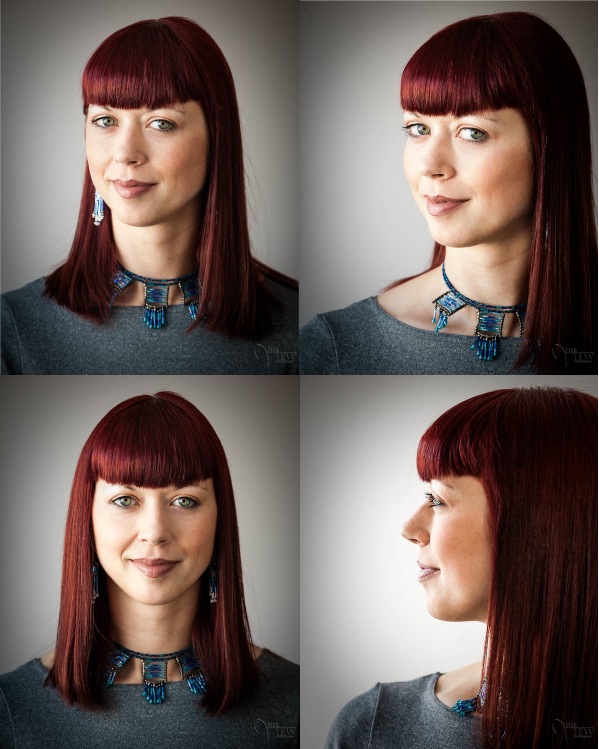
A Guest Post by Darlene Hildebrandt.
Definitions or descriptions
Simply put, facial view is what portion or angle of the face that is showing towards the camera. How is the subject’s face turned or angled relative to the lens, and your position at camera.
Your camera angle is where you place your camera, in relation to the subject in so far as the height, distance, and angle to the subject’s face.
Sounds pretty straight forward right? It is, however, small differences in either of the above can produce undesirable results. We’ll dig a big deeper into that in a bit, stay with me!
Facial Views
First let’s look at the 4 mains Facial Views used in portraiture. They are:
Full face is where your subject’s nose is pointing directly towards the lens. You see equal amounts of both sides of their face.
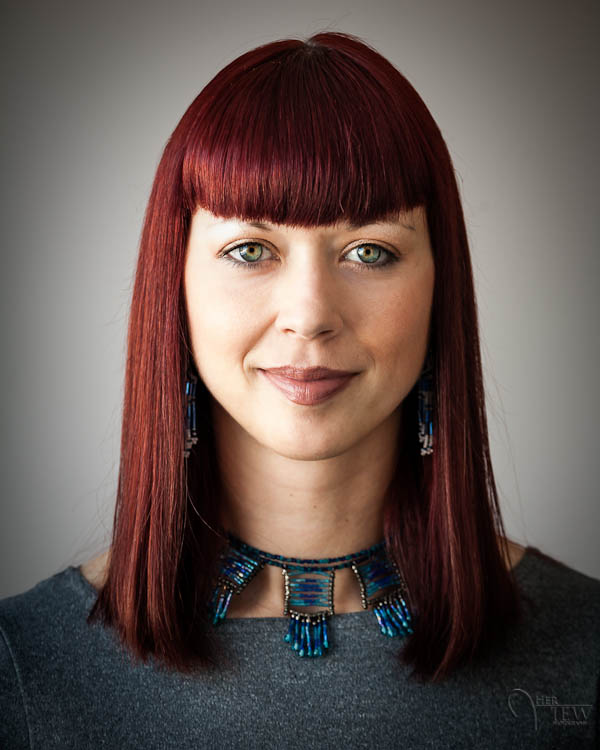
3/4 view is where your subject turns their face just slightly in one direction until you cannot see the far ear any more.

2/3 view is there the subject has continued to turn their head until the line of the nose is almost touching the outline of their cheek on the far side. Be careful not to turn them past that point so the nose breaks the line of the cheek. It’s not a rule, but it is not nearly as flattering that way.
*Note: notice her earrings in the image above, and how it is not showing below her jawline in the one below. When she turned her face just a little more, the earring looked like it was coming out of her face so I had her remove it for this image. Watch for things like this as the facial angle changes.
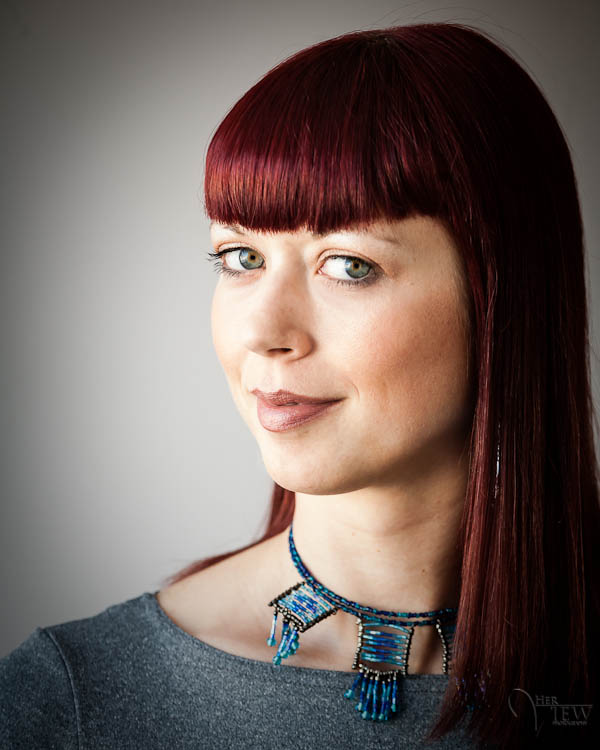
Profile is where the subject’s face is turned almost exactly 90 degrees from front, basically their nose is pointing sideways. You should only be able to see one side of their face and not the eye on the far side, in a true profile.
*Note: once again watch for things like earrings and hair hanging down under the chin, which can look a bit odd. I usually brush hair back and have them remove an earring if it doesn’t look right and looks like it’s dangling under the chin or neck.
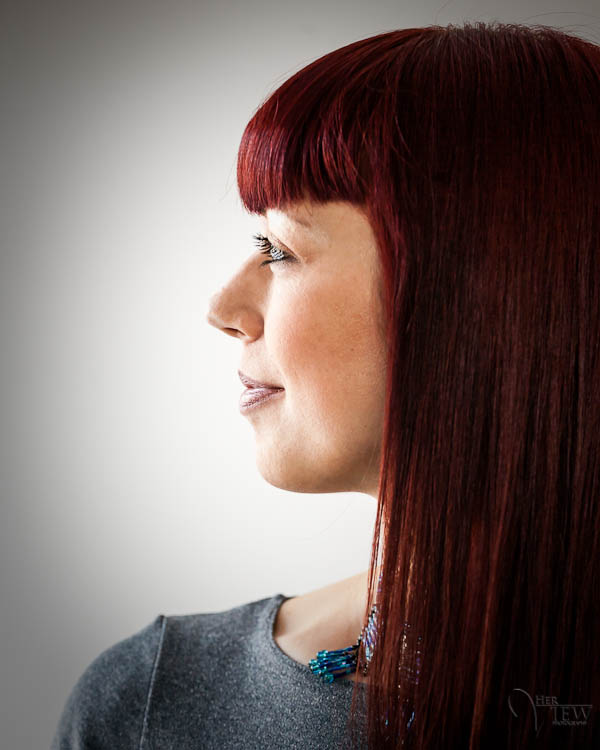
Camera Angle
Where you place your camera makes a huge difference in how your subject appears in the final image. Keep in mind these are not hard and fast rules. Use them as guidelines and starting points, then use your judgment as each person is unique. Portray that how they wish to be portrayed. When you learn these tips and see how they work in practice it becomes easier and easier to know how to approach each portrait.
- A high camera angle (above their eye level) will emphasize the face more than the body. This is good for a heavier set person, to help them appear slimmer if that’s desired (HINT: most women will NOT get upset if you make them look slimmer!!)
- A low camera angle (below their eye or even chin level) can make a person look taller, or seem as if they are more powerful. But, this is not very flattering for most people. You end up looking up their nostrils, and the body appears larger than the head and face, which is generally not desired by most people.
- For group portraits of multiple people, camera position is generally about eye level, or slightly lower. This cuts down on distortion of the body parts, making them look oddly proportioned.
- For a portrait of one or two people, having the camera at eye level or slightly higher is the most flattering, for most people.
Lenses
As well as camera height or angle, which lens you select will also change the look of your portrait drastically. Think about what we know about different lenses . . .
- wide angle lenses: emphasize perspective, distorts things, makes them seem more three dimensional
- telephoto or long lenses: compress things, isolate subjects, make them look less 3D
That’s all I’m going to tell you about this, I want to find out what I’m talking about by trying it out. Look at my examples below, then find yourself a person to photograph and use different lenses and see how it changes the image.
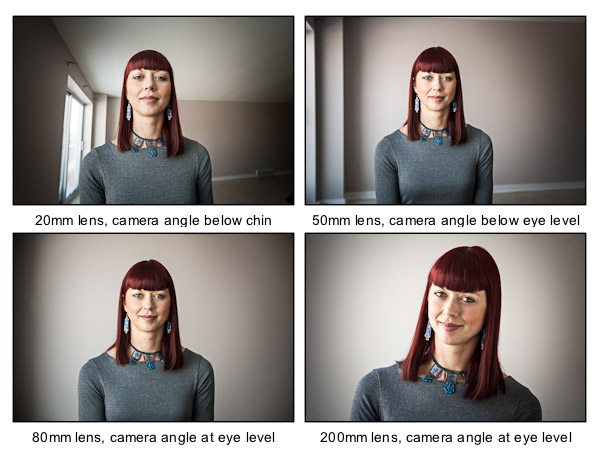
Tell me what you notice about the examples here. What do you notice changing in each?
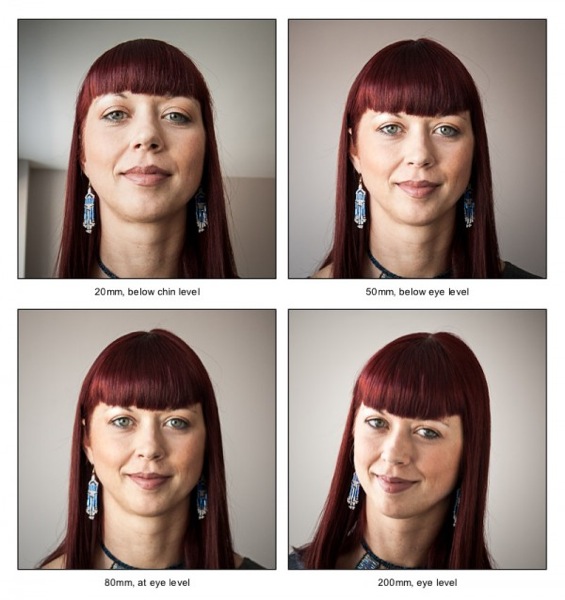
How long does it take to master this stuff?
One of the most comment questions I get asked by my students is “how long did it take you to learn all this stuff?” – the answer is two fold: 4 weeks, and 25 years! I say that with tongue in cheek but it’s true. I “learned” all the concepts and guidelines relatively quickly because I was in a two year photography program so I was completely immersed in it. It’s like learning a new language, if you move to that new country and you have to speak it all the time, you will learn a lot faster than only speaking it once a month. The same is true of photography. So the best advice I can give you on how to learn faster, is to get out and photograph more often.
The second part of my answer, the 25 years bit, means that I’m still learning. I’ve learned things from my students and other photographers and do so continually. Don’t ever expect to suddenly “get” it and you can then stop learning. It’s a process, and it’s ongoing. As soon as you think you’ve learned it all, or you know it all then it’s time to quit because you’ve probably lost the passion. At least that’s my opinion.
Call to action – practice at home ongoing
This is not an assignment but rather a suggestion to just start noticing the facial view and how to adjust your subject. If you sit a person by a light source such as a window, you can see that just by them turning their head towards the light, it will also change the lighting pattern that falls on their face. See how this information can then be used to your advantage once you know the basics.
Different facial views will be flattering for different people. Experiment and see what works best for each person you photograph. Have the person sit and just turn their face and see how the shape of their face changes and how the light falls on them differently.
While you’ve got your subject for the last exercise see if you can slip this in too. Take 5 images of your subject from different camera levels. Don’t change your lens focal length, or distance to them – just camera height:
- one at slightly below their chin
- one at slightly below their eye level
- one at eye level
- one at slightly above eye level
- one at quite a bit above eye level
Which is the most flattering angle for that person? From which angle would you most want to be photographed? Why?
Darlene Hildebrandt is a professional photographer and educator who teaches aspiring amateurs, hobbyists and pros how to improve their photography skills through online photography tutoring, classes, and photography travel tours to Cuba. Darlene has written the ebook 10 Challenges To Improve Your Photography which you can find as a resource on her website. She can also be found on Twitter at @ProPhotoTutor.